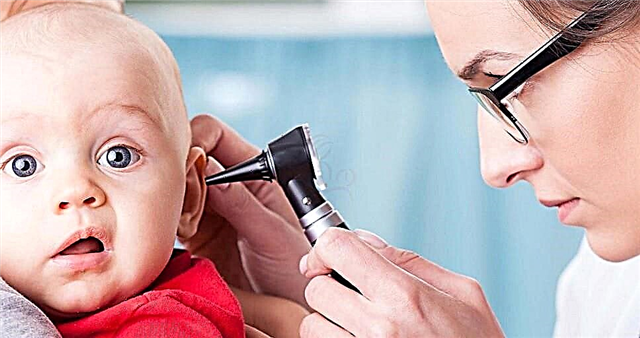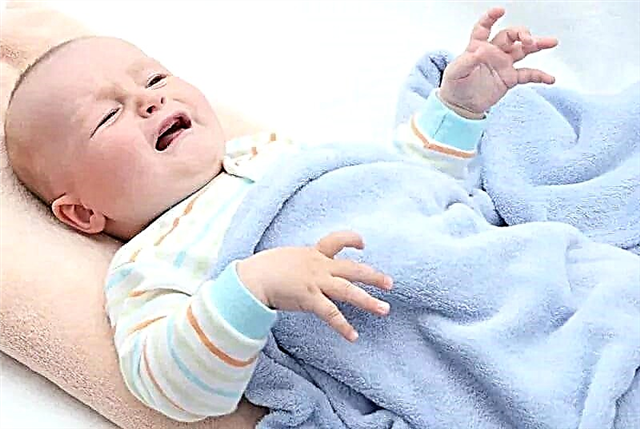Operations on internal organs, for example, intervention for appendicitis, often lead to the formation of adhesions - fibers from the connective tissue. Similar adhesions can be observed on the genitals of newborns. They are congenital or acquired.

Baby
What is synechia
Synechiae in boys is the fusion of the glans penis with the foreskin. This condition is common among newborns. It is considered a pathology when it does not go away as the baby grows up. Disconnecting adhesions is necessary if they cause inconvenience, provoke inflammation or cause unpleasant pain. If the accretion does not disappear on its own by the age of three, and the head does not open, the baby should visit a urologist.

Child at the doctor
Possible Symptoms
If the foreskin has grown together with the head in a child, symptoms appear:
- Discomfort when going to the toilet;
- Discharge of a purulent nature;
- The foreskin becomes inflamed;
- The head of the penis is completely invisible; when trying to expose it, the child experiences pain. It may turn red and swell, then it will pulsate, which is explained by a change in the blood supply;
- Itching that the child tries to relieve by scratching. As a result, skin lesions will worsen.
Any of these signs is a reason to see a doctor. The doctor must examine the little patient in order to understand how to proceed, whether surgery is required, or whether drug treatment can be dispensed with.
How synechiae appear
Synechiae of the foreskin in boys can be congenital or appear after trauma. If the genitals are damaged, the connective tissue begins to grow vigorously, which leads to the appearance of adhesions. In this case, treatment will be required. Pathology will not be eliminated on its own.
Congenital fusion can appear under the influence of factors:
- Genetic predisposition;
- Intrauterine infection. If the mother was seriously ill while carrying the baby, then toxic substances, pathogenic microorganisms could affect the child. In particular, the onset of inflammation in the pelvic region is possible, which will disrupt the correct formation of tissues.
Boys have glands under the foreskin that secrete a secretion called smegma. If it is very small, then the risk of adhesion formation increases. Then the head will remain closed, it will be impossible to physically separate the foreskin.
Note! If there is too much smegma, it can build up, leading to inflammation. In this case, the foreskin will be swollen, reddened, and liquid discharge will appear.
Possible consequences
If therapy is not carried out on time or if you try to move the foreskin on your own, complications may arise:
- Inflammation of the urinary system, kidneys. Cystitis is most often diagnosed;
- Pinching of the glans penis or paraphimosis. This is a dangerous pathology that can provoke tissue necrosis. In this case, they will have to be deleted;
- Head inflammation (balanitis). The child is in pain and itching. Usually accumulation of smegma is noticeable, purulent discharge is often observed. In this case, the head swells. If its defeat is not stopped in time, the disease progresses, balanoposthitis will develop. In this case, inflammation will already capture the foreskin.
In addition, fungal infection of the penis, genital herpes may begin, and the risk of chronic inflammation of the prostate gland increases. The likelihood of complications increases when hygiene procedures are ignored.
Diagnostics
To make a diagnosis, the child must be examined by a doctor: a surgeon or urologist. He needs information about when the adhesions appeared: at birth or after an injury. The doctor will examine the connective tissue between the head and the inside of the foreskin. When trying to lightly dilute the flesh and head, most likely, the baby will experience pain or discomfort.
Typically, patients are prescribed general and biochemical blood tests to determine if there is inflammation. First of all, attention is paid to ESR and leukocytes. A urinalysis is also needed to rule out damage to the urinary system.
Methods and stages of treatment
If boys' adhesions on the glans of the penis are not accompanied by inflammation, parents should continue to maintain good hygiene (otherwise consult a doctor immediately). It is best to teach your baby how to wash properly as early as possible. Until he is able to do it on his own, go to a shower with him 2-3 times a day. When the baby is wearing diapers, water procedures are necessary with each change. After the bath, you need to wipe the skin dry, while it is recommended to get wet.
Note! Sometimes it is advised to treat the head with Miramistin, which almost everyone has in their home medicine cabinet. This will eliminate inflammation. The need for the procedure and the frequency of use should be checked with the doctor.
Up to three years, synechia is not treated with surgery. Surgical intervention will be required with the development of pathological processes that threaten the health of the child. In other cases, try to do with herbal baths. Chamomile and calendula have proven themselves best. They are usually used daily for 1-2 weeks, the doctor may advise you to do them more often, twice a day.

Baths
For the treatment of synechiae in boys, there are ointments that help the adhesions begin to dissolve. They are applied to the connective tissue cords. How long and what drugs to use, the doctor will say. Sometimes the specialist himself injects the medicine under the foreskin with a syringe.
Note! The need for surgery is discussed after the child reaches three years of age. It can also be carried out during adolescence.
Treatment results and prognosis
If the boy's foreskin has grown together on the genital organ, he must be observed by a doctor. It is the specialist who decides what therapy is required for the little patient.
Surgery
After surgical separation of the synechiae of the foreskin, the boys do not have scars. If complications do not arise, the doctor will have to visit once a year. As a result of the procedure, carried out under local anesthesia, all adhesions are removed, and the head of the penis is released.
Medication treatment
Medication-based therapy should speed up the process of adhesions disappearing. Ointments are applied to visible strands. Physiotherapy is sometimes prescribed and a gentle foreskin massage is recommended. Treatment usually lasts 3-4 months.
Period after surgery
After surgery, the main task is to prevent inflammation, especially infection. In rare cases, complications from the genitourinary system are observed. After a surgical procedure, it is important not only to follow the rules of hygiene, but also to follow all the doctor's instructions. For some time, you will have to use ointments that have anti-inflammatory and healing effects. The child usually recovers in 2-3 weeks.
Komarovsky's opinion
Children's doctor Komarovsky recommends not to touch the foreskin once again, especially not to try to detach it yourself. Indications for intervention are pain, redness, swelling, discomfort when urinating. In these cases, you do not need to do anything yourself, you should consult a doctor who will prescribe the necessary treatment. Therapy should be carried out only after being examined by a doctor.
Note! Compliance with the rules of hygiene is the main condition for the health of the genital organs of the crumbs. If the child wears diapers, then it is necessary to periodically arrange air baths.

Baby rests without a diaper
Prevention
To avoid adhesions and reduce the likelihood of complications, following the recommendations will help:
- Observe the rules of hygiene, wash the child 2-3 times daily. After the procedure, wipe the skin dry with a soft towel;
- Leave babies for a while without diapers;
- Do not allow the child to be in an overfilled diaper for a long time;
- Do not start diseases related to the genitourinary system. Do not self-medicate;
- Buy linen from natural fabrics and make sure that the clothes do not squeeze the genitals, do not pinch or rub.
If a young mother noticed adhesions on the boy's pisun, do not panic. For a newborn child, this is considered the norm; they are not recommended to be treated until the age of three. Therapy is necessary only if there is an inflammatory process. Synechiae also occur in girls when the labia minora grow together. To avoid the formation of adhesions, you must first of all follow the rules of hygiene. If the child feels pain, begins to worry, and the genitals become swollen, be sure to see a doctor.



